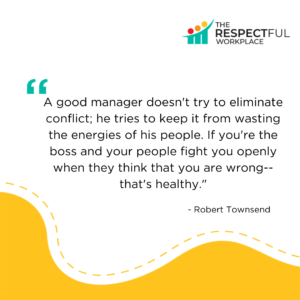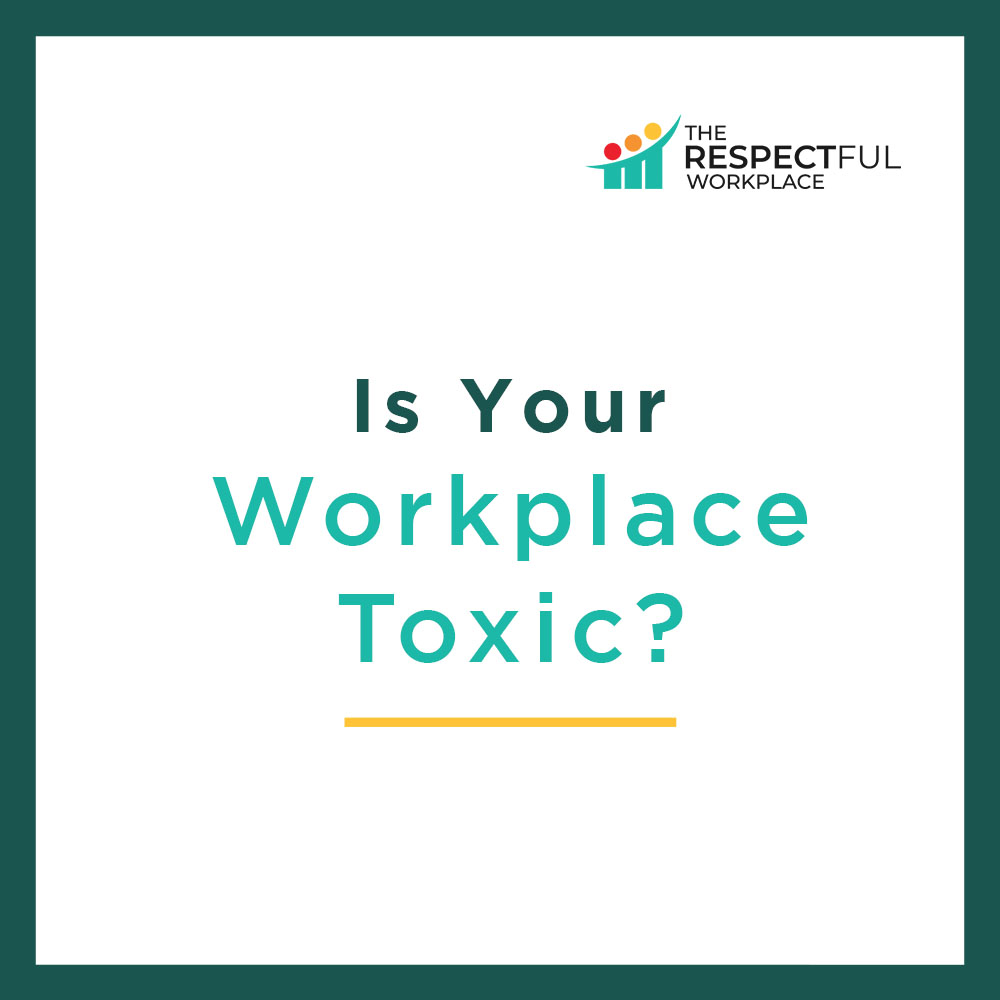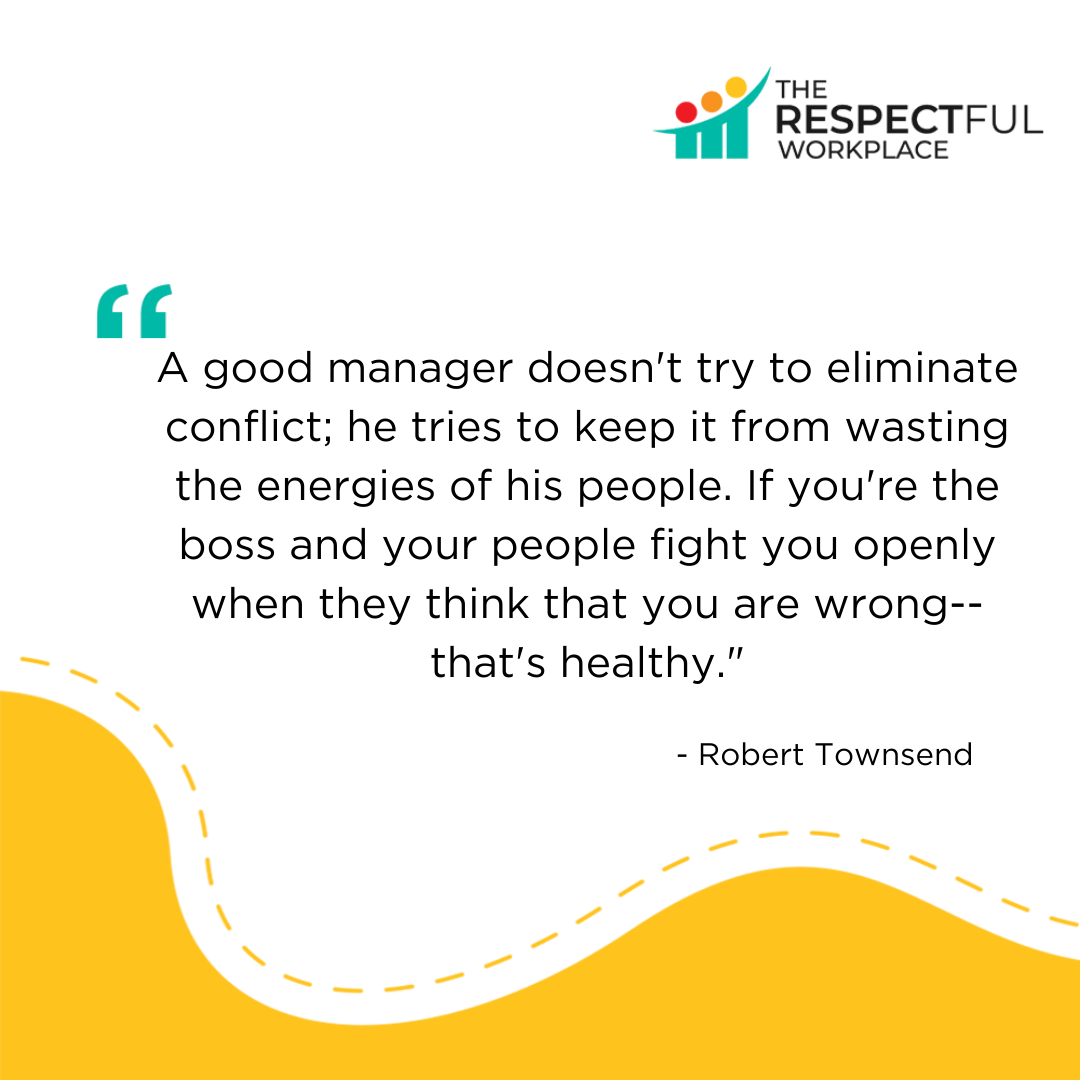Causes of Workplace Conflict
 Let’s face it.
Let’s face it.
Conflict in the workplace is inevitable when people with different experiences and priorities are put together.
Conflict can manifest overtly such as outright bullying and angry outbursts. It can also manifest less obviously as passive aggression, gossip and undermining someone’s reputation or work product.
The negative effects of workplace conflict can include work disruptions, decreased productivity (just think about all the wasted time trying to resolve conflicts between employees!), project failure, absenteeism, turnover, termination and even costly litigation.
More than half of employees in a recent survey have reported they have been the victim of abusive workplace conflict in the past year. Heightened tension over conflicting political views may be one cause of this increase.
Causes of workplace conflict, including:
- Personality differences.
- Inequities in treatment between employees - “playing favorites”.
- Un-clarified roles in the workplace.
- Putting a non-supervisory employee in a position of "supervising" another employee, thus creating resentment.
- A business slowdown or pending merger or a reduction in force.
- Poor communication, including misunderstood remarks and comments taken out of context.
- Cultural, gender, age or professional differences over work methods or goals.
At The Respectful Workplace we provide companies with programs to address these sources of conflict and help eliminate them to create positive work environments where employees feel valued, conflicts are quickly addressed in a positive and healthy manner and productivity and profits increase, and the risk of liability for expensive litigation decreases.
Come back for our next management tip on how to address conflict in the workplace.
Contact us for a free 30-minute assessment of your workplace culture to see if we can help your company mitigate the inconvenience and risks of workplace conflict and create that positive culture where good people want to work.
#ManagementTip #RespectfulWorkplace #EmploymentLaw
Is Your Workplace Toxic?
Think of a beautiful lake…. Clear & pristine.
Water so clear you can see the bottom of the lake floor and all the fish swimming around… You can see the rocks below….
Before you start to fish for tonight's dinner you reach down, cup your hands and drink in the beautiful mountain spring water…
But then you look up and across the lake someone is dumping gallons of raw sewage into it - and now, it’s polluted, fouled.
Sure, maybe you’d still go boating on it (after all, it’s not 3 Mile Island).
But it would still bother you knowing all that toxic waste is in the water and you’d be nervous about being in it.
Now imagine if you had to rely on the fish from that lake for your food, or the water to drink. You might not die, but you’d probably get pretty sick. And suddenly that lake isn’t such a great place anymore.
 Like pollution, inappropriate and disrespectful workplace conduct fouls a work environment. This unhealthy work environment leads to physical and mental illnesses like high blood pressure, headaches, depression, heart disease, cancer and the list goes on.
Like pollution, inappropriate and disrespectful workplace conduct fouls a work environment. This unhealthy work environment leads to physical and mental illnesses like high blood pressure, headaches, depression, heart disease, cancer and the list goes on.
Literally, an abusive and disrespectful workplace can make you SICK!
All this thwarts the possibility of a productive - and prosperous - workplace.
Are any of your employees engaging in these types of behavior?
- Having a condescending attitude toward others;
- Gossiping
- Shaming others for asking to have their boundaries respected;
- Showing up late to meetings;
- Looking at your cell phones during meetings or conversations
- Breaking the confidentiality of private information
- Demeaning or yelling at a subordinate in front of others
- Not giving clear directions to employees
- Not giving credit to employees for work well done
- Not accepting responsibility for your errors/mistakes.
- Using profanity;
- Discussing private body parts (yours or someone else’s);
- Discussing private sex or dating life, or that of someone else;
- Violating someone’s physical space boundary Asking probing, personal, questions about a co-worker’s private life;
- Undermining or blaming staff or a colleague;
- Taking credit for someone else's work
- Trying to convert others to your political or religious beliefs
- Opening someone else's mail
- Telling offensive jokes
- Not pulling your own weight
Believe it or not the above examples may be rude, insensitive or grossly inappropriate but most of the time it’s not ILLEGAL because it isn’t happening because of someone’s race, or age or gender or any of the other protected classes.
The boss yells at everyone, men and women alike. The coworker gossips about everyone – black and white. In other words they work for, or with, Equal Opportunity JERKS.
But just because it’s not illegal it doesn’t mean it should go on. Because toxic work environments are NOT productive and prosperous ones. And they lead to less commitment by employees, high turnover, and possibly expensive lawsuits.
The Respectful Workplace has programs to help companies increase employee awareness of their behaviors and the impact upon their co-workers and in so doing hopefully elevate everyone’s emotional intelligence and by doing so eliminate these, and other, toxic behaviors and elevate the culture of the workplace. And hopefully minimize the risk of future lawsuits by employees.
Discover the right workplace training for you and your business today, with a FREE workplace consultation when you CLICK HERE to contact me.
#ToxicBehavior #HRTraining #RespectfulWorkplace #EmploymentLaw
Think You Can’t Afford Sexual Harassment Prevention Training?
You Can’t Afford to NOT Have It.
We’ve all seen the recent media coverage of inappropriate conduct and outright sexual harassment by high-profile individuals. And now we have the #MeToo Movement. (And I fully support it, by the way.) Here are some facts that may shock you about the prevalence of sexual harassment in the workplace.
1. In FY 2015 Forty-five percent of the EEOC’s harassment claims were sex-based.
In that year the EEOC received over 28,000 harassment claims for both private and public employers (e.g. government). A majority of this 45 percent were sex-based claims. Other types of harassment claims included harassment on the basis of race, disability, age, national origin and religion. Even though many harassment claims go unreported those that are reported are overwhelmingly due to sexual harassment. If someone is asking for a sexual favor, making any kind of sexual advance, sexual comments or doing anything in a sexual nature at work, it would be considered harassment.
2. At least 25 percent of women have been sexually harassed at work.
Let that sink in. At least one in four women experience sexual harassment in the workplace. Some studies have determined the actual number is even higher. Regardless, even at 25 % the number of women who experience sexual harassment in the workplace is still disturbingly high and totally unacceptable.
3. Sexual harassment claims cost businesses hundreds of millions of dollars.
In 2015, the EEOC recovered $164 million for workers alleging harassment at work. But that number doesn’t even include money recovered by private attorneys representing employees! In addition to the monetary settlements and award, employers face staggering legal fees not to mention a seriously disrupted workplace due to having to deal with the inconvenience of litigation.
The level of awareness of sexual harassment in the workplace has risen to a point that any employer who doesn’t take pro-active action to prevent it is doing so at their own peril It is more important than ever that employers take steps to ensure their employees are well trained on this subject in order to ensure employees are working in an environment where they feel safe and valued.
And if that wasn’t enough incentive, did you know that companies with a solid anti-harassment policy that all employees are aware of, and which has a clear and procedure through which victims of harassment can report it have an added defense to claims of supervisors’ harassment of their subordinates. This is because if the employee fails to avail herself of the reporting procedure she loses her right to sue. As a result, the time and money a company spends on this training can not only prevent harassment from happening, in the first place, but if it does happen, it can assist a company in mitigating the damage through an immediate response to the complaint, and in the event the employee fails to report it, it can help the company to avoid liability entirely. Quite simply, it is a layer of protection no company can afford to not have.
The Respectful Workplace Vision
Many people have asked me why I would want to move away from a successful law practice and create The Respectful Workplace. I did so for several reasons but here are my main ones. First, I’ve noticed a spike in the last few years of potential clients calling my office telling me they are working in a “hostile work environment” and want to sue their employer. In listening to their stories it is clear that they are working in a toxic environment and often subjected to rude, inappropriate, disrespectful and sometimes outright abusive treatment. But more times than not the conduct wasn’t direct at them because of their membership in a protected class, i.e. gender, race, religion, national origin, disability, color, sexual orientation. Instead, they just work for what I call an “Equal Opportunity A**hole”. But that’s not illegal and there was nothing I could do to help them. At times their response was heartbreaking as many were suffering from anxiety, depression and a host of many other illness brought on by the stress under which they were working. And they felt trapped.
As if the above wasn’t enough, many of my employer clients expressed their concerns about employee conduct in the workplace that they feared might be putting them at risk of litigation. Again, in most instances the conduct itself was not per se illegal, but it was most certainly inappropriate and was taking a toll on the individuals subjected to the inappropriate and disrespectful conduct. This led to lower employee productivity, increased stress related illnesses and absences, lower morale for employees and of course – lower profits. But in many other cases the conduct was illegal and it ended up costing the company dearly in time away from their business, legal fees and sometimes crippling monetary damage awards.
I decided it wasn’t enough for me to only represent people after they had been subjected to abusive behavior, and it wasn’t enough to defend employers from claims of abuse and harassment. I decided to do something about it to help make this all stop. So, I founded The Respectful Workplace and created training programs that address these issues in the work place and help resolve them by creating workplaces that work for everyone. You know the old saying, “you never see yourself the way others see you”? Well it’s true. And my programs address this very problem so people can recognize the effect their behaviors have on others in order to create a safe and productive workplace for everyone and minimize the risk of litigation for the company.
As an owner of my own firm I can appreciate the difficulty of taking employees, especially managers, away from their work for several hours. However, the time and resources devoted to this training will more than pay for itself in a more productive, positive and profitable workplace.
Given recent media coverage of inappropriate conduct and outright sexual harassment by high-profile individuals it is more important than ever that employers take steps to ensure their employees are well trained on this subject. Also, companies with a solid anti-harassment policy combined with training on the subject and reporting procedure have an added defense to claims of supervisors’ harassment of their subordinates. As a result, the time and money a company spends on this training can not only prevent harassment from happening, but if it does happen, can assist a company in mitigating or sometimes even avoiding liability entirely. Quite simply, it is a layer of protection no company can afford to not have.



